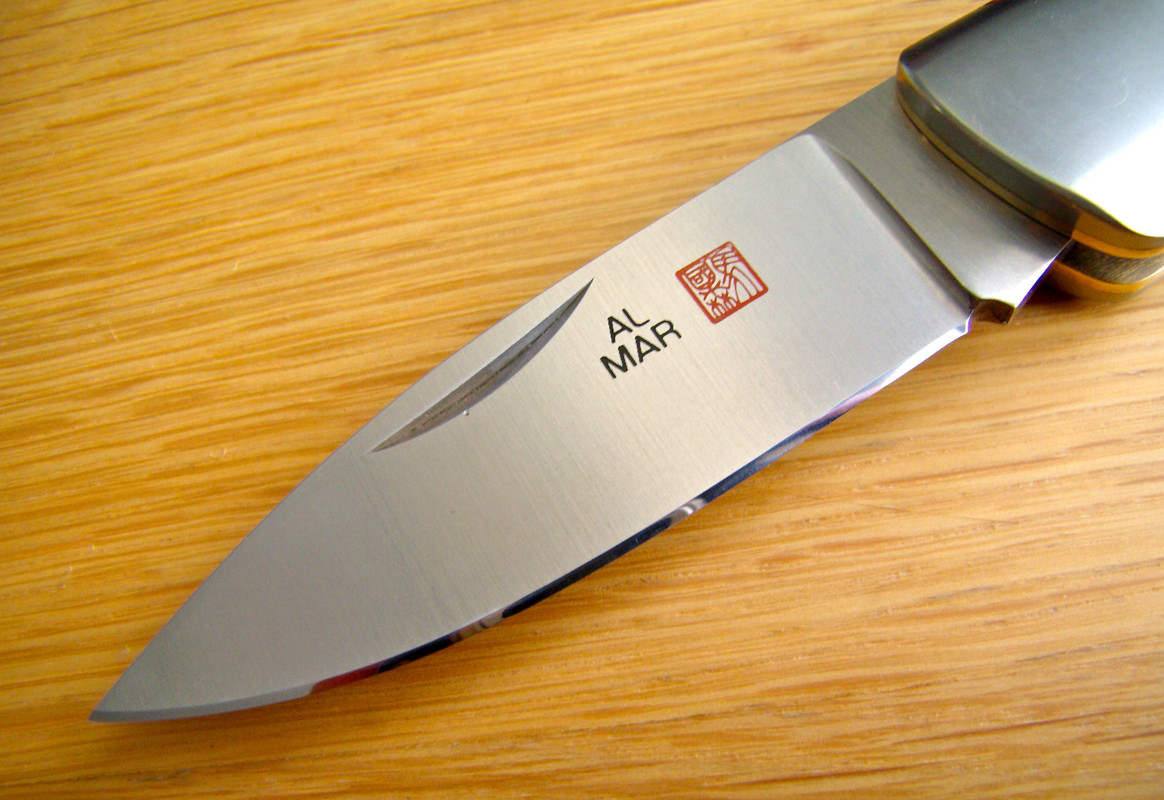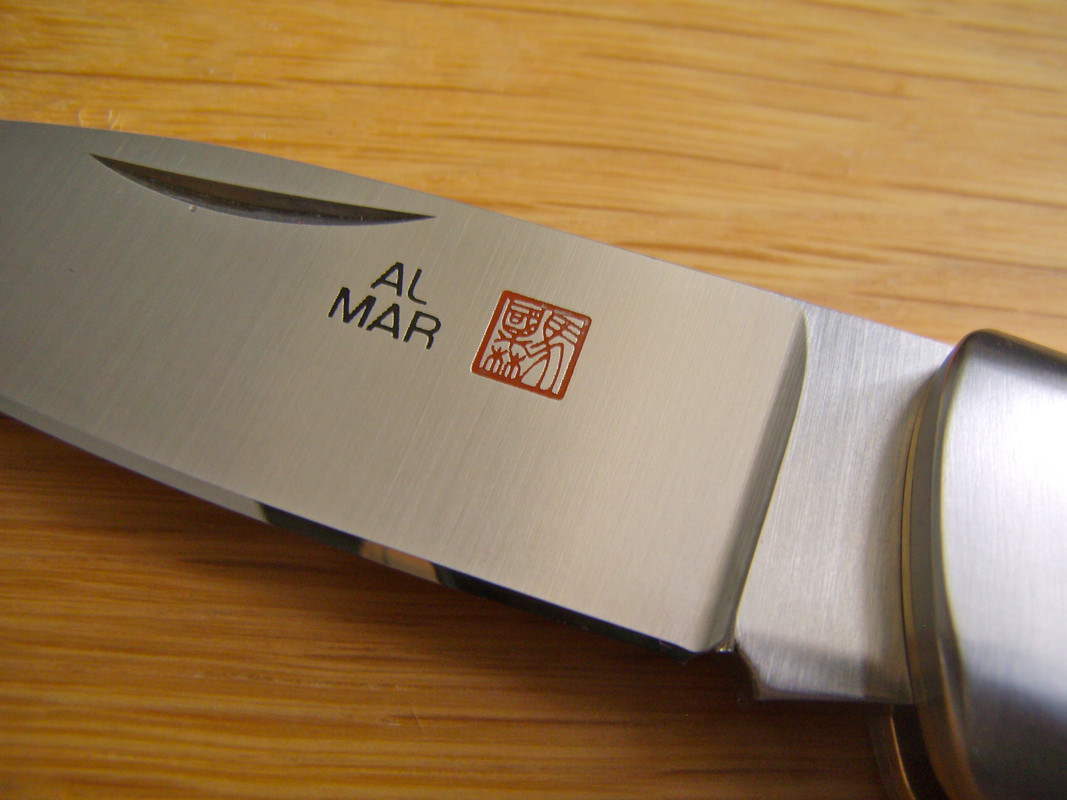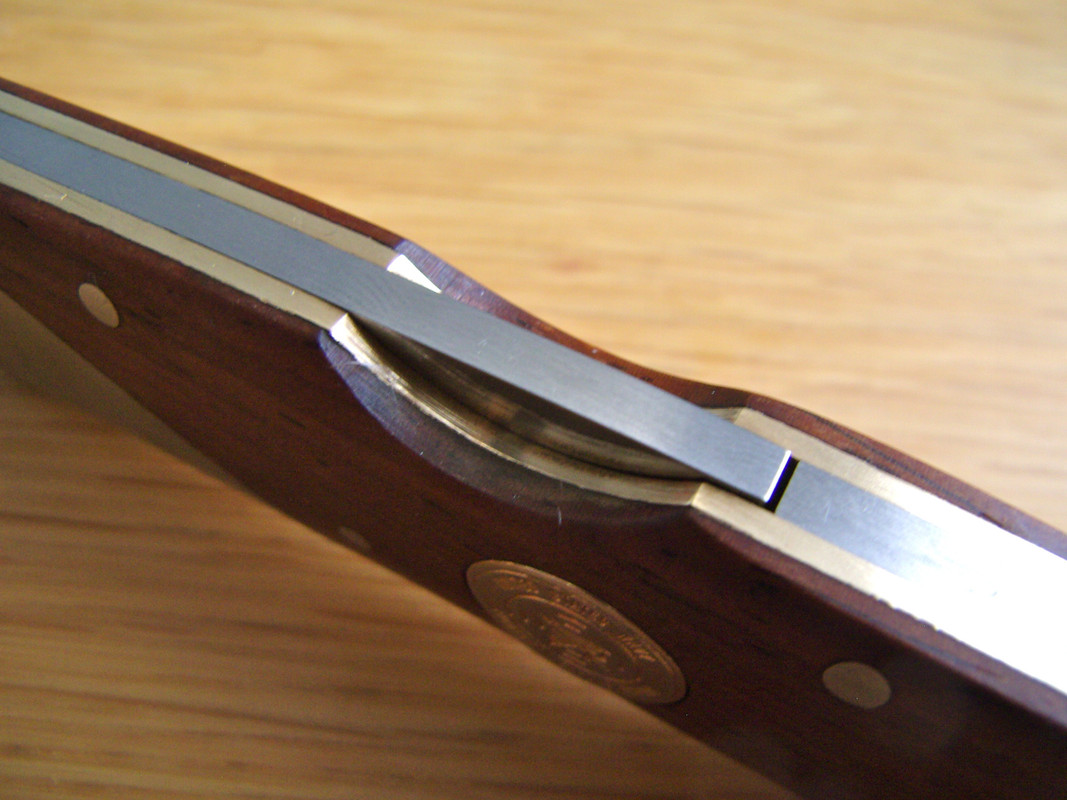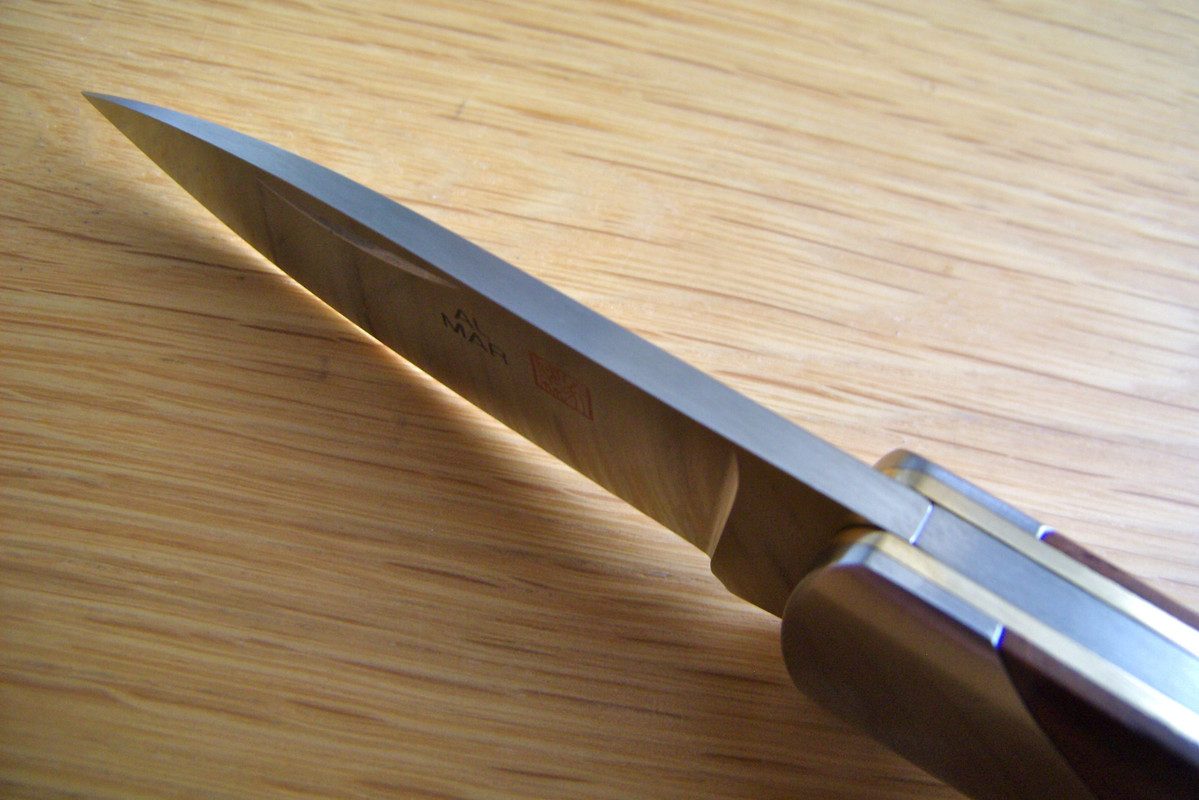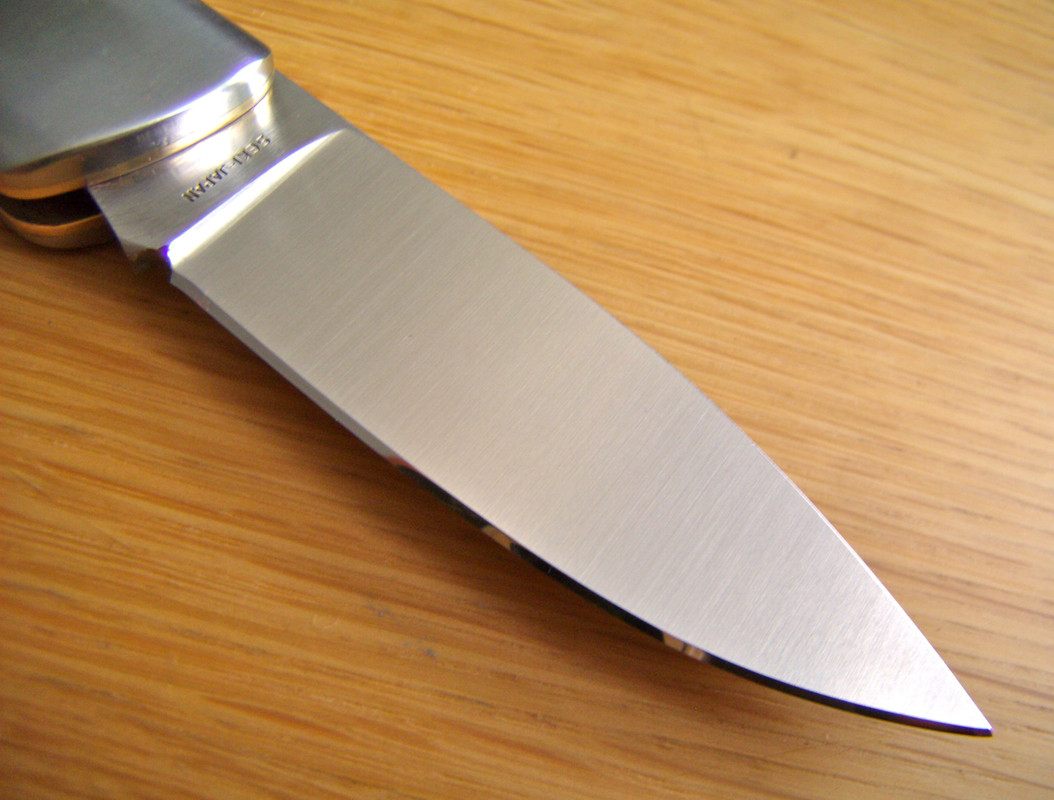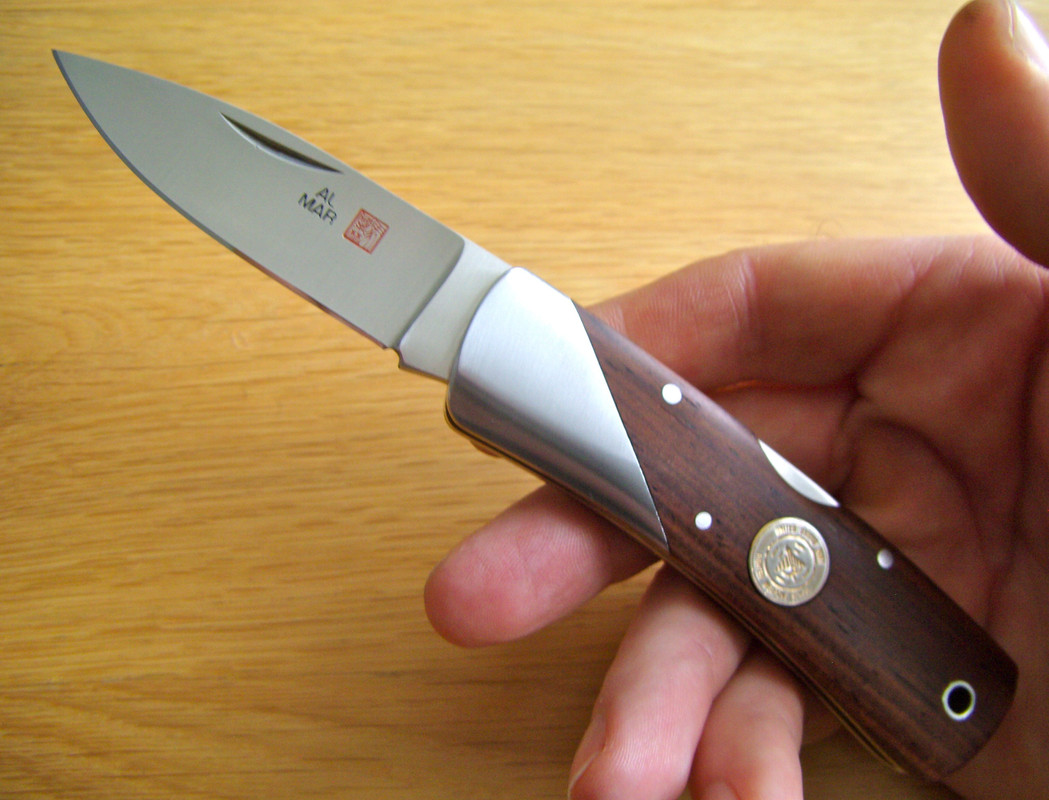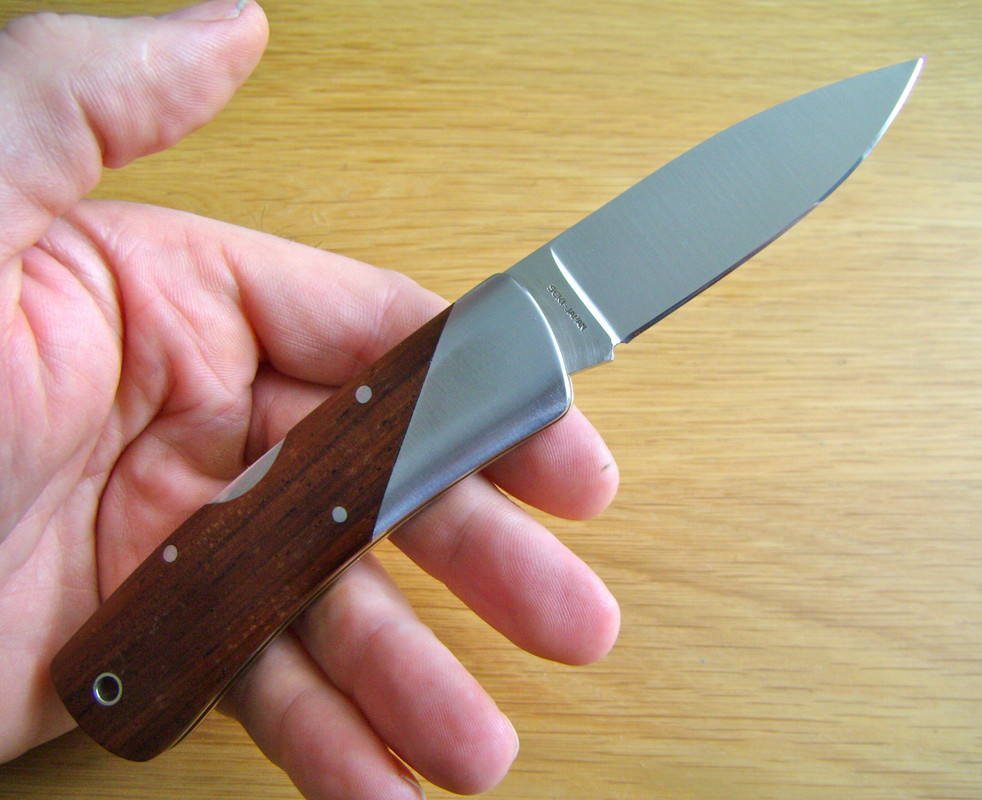- Joined
- Feb 16, 2007
- Messages
- 662
And how the knife looks now.
While keeping the edge angle about the same so the bevels would not widen too much per owner's request, i resharpened the main edge completely and the bayonet grind only superficially to come to a sharp point with a 15 micron diamond compound Paper Wheel, then cleaned up the bevels a bit and removed the tiny burr with a 1.0 micron diamond compound Paper Wheel.
The edge angle again measures ~55 degrees inclusive, yet the new apex is just sharp enough to shave the hair on the back of my hand a bit on skin level.
Would you suggest going with 2x paper wheels with diamond compound, over the factory 1x Grit and 1x Paper polish wheel?
And what mix of grits would you say is optimal for sharpening 'sharpish' pocket knives? IE restoring a knife that slices paper, but a bit roughly, and bringing it up to shaving / super shaving sharp?
And whats the best way to apply the diamond paste to the wheels?































